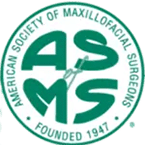The goal of a Blepharoplasty is to rejuvenate the eyelids. The strategy to achieve this goal may vary somewhat for each individual patient, especially given the complexity of the eye and orbit, and the variability of aging and ethnicity. That said, the usual aesthetic problem of aging eyes is invariably one of skin excess and thinning of the eyelid layers. The primary strategy, then, should be to reduce the skin excess and reduce the consequence of thinning of the skin, muscle, fascia and fat layers.
I perform this surgery in an accredited, outpatient surgicenter or in the hospital. Most patients prefer to have anesthesia by conscious sedation and locally injected anesthetic. They are awake and responsive, but also relaxed and feel no pain except a tiny injection (all patients prior to surgery receive in the preparation area a dose of Demerol, Valium, an antibiotic and a steroid to reduce swelling and possible nausea). The surgery itself requires about 1 hour.
The upper eyelid incision is carefully marked in ink to parallel the patient’s natural lid crease. The amount of skin excess is measured and re-measured. Bleeding is minor and is easily controlled. The closure is done with removable sutures. Because the upper lid does more than 90% of the work of eyelid closure, these sutures remain for about 7 days.
The lower eyelid incision is marked in ink 1 millimeter beneath the lashes and extends to just beyond the lateral corner of the eye. After the incision is made, the eyelid is partially freed up to the junction with the cheek. Bleeding is checked and the underlying fascia and fat are examined. If there is a rare fat excess, it is carefully exposed and trimmed. The eyelid is then elevated into its intended new position. The excess of skin/muscle is measured and removed. Final check for bleeding and recheck of the lid position and function is followed by closure with permanent suture. Antibiotic ointment and a cold compress are applied and the same surgery is repeated on the opposite eye.
There are many other potential problems to the aging eyelids, including upper eyelid droop (ptosis), rounding of the eyelids’ corners, loss of fat to permit the eyeball to sink, turning in or turning out of the lower lid, and others. These problems, if they exist, deserve careful additional discussion during the initial consultation and examination in the office, but they normally can be corrected.Risk of complications are also discussed in the pre-op consultation. A complication can be of surgical technique or of surgical judgment. As an example of judgment, patients should beware of the choice of a “hidden incision” blepharoplasty, whereby a trans-conjunctival incision is made and fat is removed from the lower lid. Most patients do not have actual fat excess (they do have fat visible through a thinned eyelid). So this procedure , however well intended to reduce scarring, is not helpful towards correction of the usual problem of skin excess and eyelid thinning. Blepharoplasty should be and is a safe and reliable procedure under the care of a Board Certified Plastic Surgeon with large experience.













